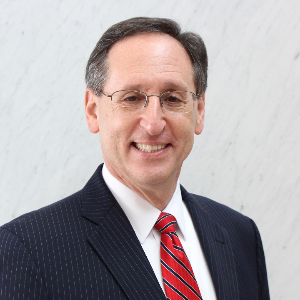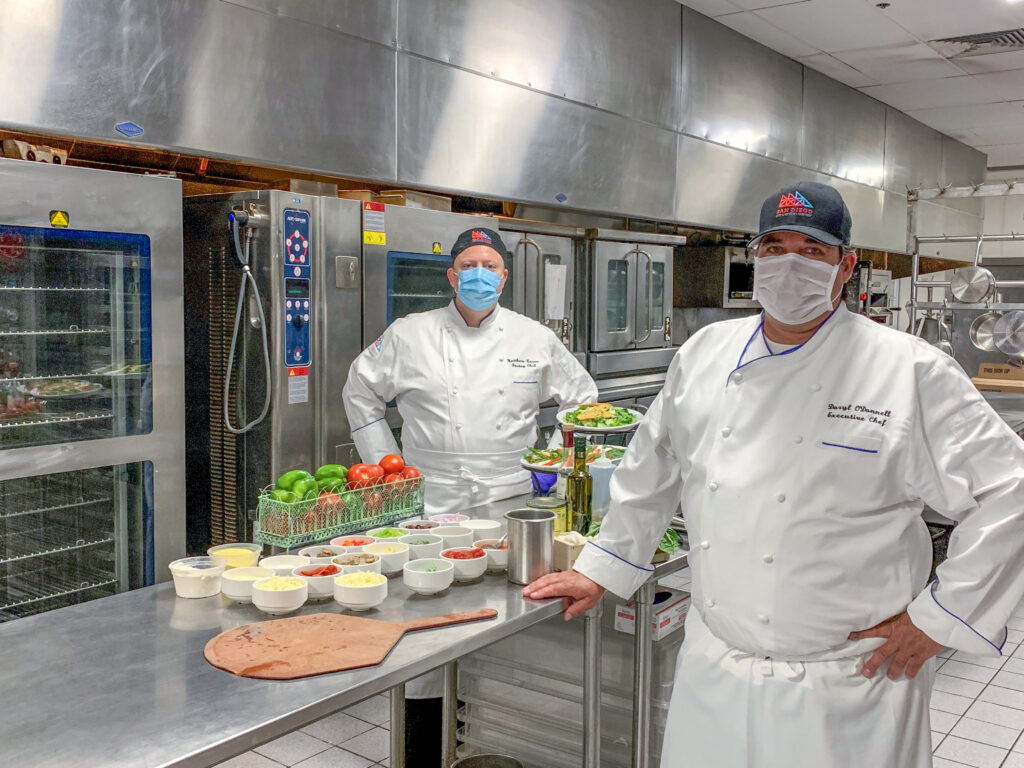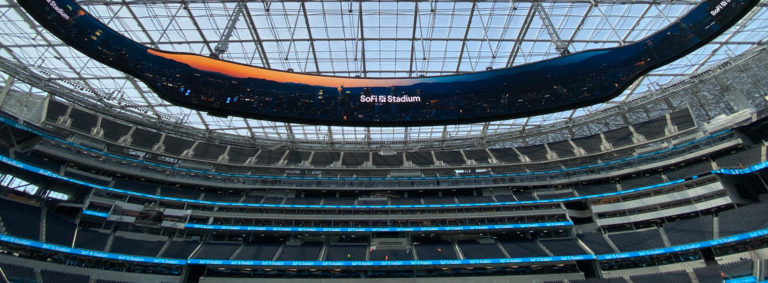VenueConnect Universities Keynote to Feature Panel of NCAA Executives
By R.V. Baugus
With a panel comprised of leaders of the Division I, II, and III ranks of the NCAA and representing various sports, it is safe to say that Bobby Goldwater, himself an across-the-board leader at Georgetown University Sports Industry Management Master’s Program Adjunct Professor; The Goldwater Group, President; and IAVM Academic Committee, Chair and Board of Directors, Universities Sector, has an all-star roster for the VenueConnect Universities keynote session Monday, October 26 from 1:15-2:30 (Central time).
Before the session kicks off, Goldwater wanted to share some further highlights about what attendees can expect in an  interview with IAVM.
interview with IAVM.
Give attendees an overview of the panel session that you will be moderating on October 26.
In recent years, the Universities sector’s VenueConnect keynote session has featured a conversation with an industry leader. Joining us virtually in 2020 will be a group of executives from the NCAA who cover an array of topics of interest to venue managers: Randy Buhr, who oversees Division I Baseball College World Series and water polo; Morgan DeSpain, Division II women’s soccer, women’s gymnastics and Division II softball; Laura Peterson, Division III track and field (indoor and out) and Division III cross country; and Niko Roberts, who handles aspects of the Division I men’s basketball championship. I will moderate the panel discussion as the Universities representative on the Board of Directors and as Academic Committee chair. Questions will be welcomed from the VenueConnect audience.
You have an outstanding panel of individuals representing NCAA Division I, Division II, and Division III. Was it important to have such a mix as we know that the three divisions are quite different from each other in how they operate?
IAVM and the Universities Committee are grateful to have established our collaborative relationship with the NCAA. The Universities sector consists of venues that host men’s and women’s intercollegiate athletic events in all three NCAA divisions, so having engaged executives representing that mix certainly is highly desirable and they will have illuminating insights for venue managers in our sector and for anyone interested in the inner workings of college sports.
If there is a good Bobby Goldwater sales pitch to draw in attendees, what would that be?
In the last several years, the Universities keynote sessions at VenueConnect have been informative interviews in which each guest has shared perspectives and experiences that have offered a depth of understanding and detail we don’t usually have access to. With four top NCAA executives joining us, we hope this year’s conversation will provide four times the value, which will benefit our IAVM audience.
Will attendees have an opportunity to ask some questions following the panel? You are likely to get quite a few with the ever-evolving environment in college athletics at this time.
VenueConnect attendees in the Zoom audience will definitely have the opportunity to ask questions of the panelists.
Is there a main takeaway that attendees can use when returning to their venues?
It’s hard to predict what a “main” takeaway for attendees will be but the Universities Committee, led by Chair David Bennett and Vice Chair Zakiya Smith-Dore, anticipates everyone will take from the keynote conversation an appreciation of how the NCAA operates, how the NCAA is handling the challenges related to the pandemic and how IAVM venues and the NCAA can work even more closely together going forward.
San Diego Convention Center Catering Operation Becomes First Centerplate Venue in North America to Achieve Rise SAFE Verification Label for COVID-19 Protocols
By Maren Dougherty
The San Diego Convention Center (SDCC) is the first of Centerplate’s North American venues to achieve the Rise SAFE hygiene verification label for food and beverage services. Rise SAFE is managed by Centerplate’s parent company, Sodexo, and Bureau Veritas, an independent world leader in testing, inspection, and certification.
To earn the label, General Manager Bobby Ramirez and his team passed a site audit and protocol review covering 36  checkpoints in four core areas: process, people/training, facilities, and hygiene/cleaning. The team demonstrated 100% compliance across these areas.
checkpoints in four core areas: process, people/training, facilities, and hygiene/cleaning. The team demonstrated 100% compliance across these areas.
“We’ve been preparing and serving food seven days a week throughout the pandemic to support Operation Shelter to Home. Through this steady operation, we have fine-tuned our measures for staff training, physical distancing, cleaning, and PPE. Consequently, we had all necessary requirements in place well before going through the Rise SAFE review and site inspection,” Ramirez said. “We are confident in our ability to safely cater corporate and private events as soon as that activity resumes.”
The Rise SAFE label follows an accreditation SDCC received in July from the Global Biorisk Advisory Council (GBAC). SDCC was among the first convention centers in the United States to achieve the GBAC STAR Facility Accreditation, which requires a stringent program for cleaning, disinfection and infectious disease prevention. Centerplate’s protocols also contributed to this third-party process.
“Centerplate has been an incredible partner throughout the COVID-19 pandemic. Their success in meeting or exceeding all standards of this Rise SAFE program is just one more demonstration of their thorough and careful commitment to safety,” said Clifford “Rip” Rippetoe, CVE, SDCC’s President and CEO.
Maren Dougherty is Director, Marketing & Communications for the San Diego Convention Center Corporation.
Willow to Deliver Digital Twin Technology Solutions at New SoFi Stadium and Hollywood Park
By Kristi Mexia
Willow, the world’s leading provider of digital twin technology, is partnering with Hollywood Park, a new, nearly 300-acre sports and entertainment destination in Inglewood, California, being developed by Rams Owner/Chairman E. Stanley Kroenke. The agreement stretches across SoFi Stadium, which will be the first major stadium to implement digital twin technology in the U.S. Using big data gathered from every aspect of the stadium and surrounding development, Willow will create a virtual copy of the facility to deliver an unprecedented level of analytical insight to create a truly world-class fan, resident and guest experience along with optimized levels of sustainability and future-proofing.
Digital twins, first developed by NASA for space exploration, are a bleeding-edge technology that converts all  quantifiable aspects of physical buildings into living, learning and evolving virtual replicas. It is the most intuitive way to store, organize and access the incredible amount of data generated by complex smart buildings, allowing owners, facility managers and built environment professionals real-time insights to strategize and optimize every aspect of a building’s operations. Importantly, the system becomes more robust over time with the addition of new data.
quantifiable aspects of physical buildings into living, learning and evolving virtual replicas. It is the most intuitive way to store, organize and access the incredible amount of data generated by complex smart buildings, allowing owners, facility managers and built environment professionals real-time insights to strategize and optimize every aspect of a building’s operations. Importantly, the system becomes more robust over time with the addition of new data.
“Our goal is to deliver a new type of fan and visitor experience, and to do that, we need a comprehensive, data-driven view into how all the pieces of this project connect,” said Jason Gannon, managing director, SoFi Stadium and Hollywood Park. “For such a large-scale and complex asset like a stadium, this is a pivotal undertaking. Willow’s Digital Twin will enable us to collect and analyze real-time big data across the lifecycle of the development, from construction to ongoing operations.”
SoFi Stadium is setting a new bar for smart buildings in the sports and entertainment sector. Designed to be a sustainable, future-forward facility for years to come, the venue is the new, joint home of the NFL’s Los Angeles Chargers and Los Angeles Rams and will also host a variety of events throughout the year. Willow’s comprehensive solution, used by some of the world’s most prominent real estate owners, will enable SoFi Stadium and Hollywood Park’s operators to gain complete transparency and a single source of truth on data from across the facility’s complex systems. By accessing this data, SoFi Stadium and Hollywood Park will be able to solve problems before they happen, manage risk and identify previously impossible integrated strategies.
“By accessing data that was once lost between project phases or in multiple systems, Willow can assist SoFi Stadium and Hollywood Park in identifying opportunities they never knew they had,” said Shaun Klann, President and Global Head of Real Estate at Willow. “Stadiums are an amazing opportunity to apply the lessons we have learned in commercial real estate, but on a much larger scale. It’s an incredibly exciting project and we are honored to partner with the ambitious and innovative team at SoFi Stadium.”
At present, SoFi Stadium is slated to host Super Bowl LVI in 2022, the College Football Championship Game in 2023 and the Opening and Closing Ceremonies of the 2028 Summer Olympics. Located on the site of a former racetrack, the approximately 70,000-seat stadium will serve as the centerpiece of the state-of-the-art, reimagined Hollywood Park, featuring a full live-work-play experience, from retail, offices, hospitality, residential units and outdoor park spaces.
SoFi Stadium and Hollywood Park was represented by Legends Global Partnerships division, which sourced, negotiated and represented SoFi Stadium and Hollywood Park in securing this partnership.
Kristi Mexia is Director, Corporate Communications for SoFi Stadium in Inglewood, California.
Henderson Engineers Names Chris Constant Director of Code Consulting
By Tyler Koonce
Henderson Engineers, a national building systems design firm with more than 800 employees nationwide, welcomes Chris Constant, PE, as director of code consulting within Henderson’s fire and life safety group. Constant is a fire protection engineering veteran with more than a decade of industry experience.
“Chris brings a wealth of knowledge from his involvement on a wide variety of complex projects,” said Paul Villotti, Henderson’s director of fire protection engineering. “He will continue to expand the services and direction of the fire and life safety team by providing the best solutions to challenging building and fire code problems.”
Constant is a licensed fire protection engineer with expertise in code analysis, fire and smoke modeling, egress  modeling, fire resistive analysis of structure steel elements, and developing building code variances for alternate design approaches.
modeling, fire resistive analysis of structure steel elements, and developing building code variances for alternate design approaches.
“We are excited that our great clients will now have access to the knowledge and problem-solving abilities Chris features to solve life safety and code issues on their projects,” said Chris Culp, Henderson’s director of fire and life safety.
Constant earned a bachelor’s degree in architectural engineering at Kansas State University, where he was a member of the Society of American Military Engineers, National Society of Collegiate Scholars, and Architectural Engineering Institute. Clients can reach him at chris.constant@hendersonengineers.com.
Henderson’s fire and life safety group is one of the largest in the industry with more than 50 engineering experts. Henderson fire protection engineers know design, life safety technology, and construction. Our diverse group of fire protection specialists includes licensed engineers with backgrounds in fire protection, mechanical, chemical, civil, and architectural engineering; NICET certified technicians; and fire service professionals. We provide thought leadership and expertise on multiple code and standards technical committees for the Society of Fire Protection Engineers (SFPE), National Fire Protection Association (NFPA), and other national organizations.
Tyler Koonce is Communications Manager for Henderson Engineers.
Lysol Sprays its Way Into Major League Baseball Stadiums
By MLB.com
Major League Baseball and RB, the makers of Lysol, today announced a new multi-year partnership to help reinforce and promote healthy habits and disinfection protocols for the league’s players, staff, and fans. The partnership will leverage Lysol’s 130 years of germ kill expertise and innovation to help maintain a high standard of healthy habits and hygiene for MLB personnel across the league, during both games and training sessions.
As MLB concludes its 2020 season and looks toward the first pitch of the 2021 campaign next spring, disinfection and germ  prevention will continue to be top of mind to help protect those in ballparks across the league. MLB’s partnership with Lysol will include multiple touchpoints and areas of focus over the coming seasons, including:
prevention will continue to be top of mind to help protect those in ballparks across the league. MLB’s partnership with Lysol will include multiple touchpoints and areas of focus over the coming seasons, including:
• Disinfecting Protocols, Best Practices and Germ-Kill Expertise: Microbiologists and germ-kill experts from Lysol will work with MLB to reinforce ongoing protocols for disinfection in ballparks, with a focus on high-touch germ hotspots, to be put in place for the 2021 season.
• Lysol Professional Solutions: Starting with the 2020 Postseason, Lysol has begun to provide Professional grade disinfection solutions to MLB, to be made available to players and staff in dugouts, bullpens and clubhouses as well as in fan areas. Lysol products are also included in Postseason hotel welcome kits for players, staff and their families.
• Community & Outreach Initiatives: MLB and Lysol will work to identify opportunities to provide Lysol product and educational materials to schools across the country, engaging with young fans and promoting healthy habits in the classroom.
The US Environmental Protection Agency recently approved both Lysol Disinfectant Spray and Lysol Disinfecting Wipes among the first to test effective against the novel coronavirus when used as directed on hard, non-porous surfaces.
“The addition of Lysol’s expertise and disinfecting products will help further strengthen efforts to create a safe environment to play Major League Baseball,” said Jon Coyles, MLB Vice President, Drug, Health and Safety Programs. “As a brand that is synonymous with cleanliness, the Lysol brand will be an important partner in our management of the evolving pandemic as well as in amplifying health and safety messages around baseball.”
“We’re thrilled to partner with MLB to help support and promote hygiene in some of the world’s most iconic sporting venues,” said E. Yuri Hermida, EVP North America Hygiene for RB. “At Lysol we also understand that one of best weapons against the spread of germs is knowledge, and we look forward to helping MLB develop an even higher-standard of cleanliness and disinfection.”
Do you want to receive a Front Row News weekly digest?
Categories
- Allied (861)
- Architecture (147)
- Arenas (747)
- Career (897)
- Convention Centers (895)
- Education (623)
- Events (1,544)
- Food & Beverage (193)
- Foundation (113)
- Guest Experience (1,496)
- Industry News (2,270)
- Leadership (1,888)
- Marketing (150)
- Membership (2,000)
- Music (213)
- Performing Arts Centers (454)
- Professional Development (409)
- Research (127)
- Safety & Security (442)
- Sports (763)
- Stadiums (608)
- Student (159)
- Technology (516)
- Ticketing (92)
- Touring (82)
- Trends (364)
- Uncategorized (743)
- Universities (218)
- Video (25)
- Young Professional (198)
Twitter Feed
- Twitter feed loading
Recent Posts
- Venuworks and ATG Entertainment Selected to Manage Fresno Convention and Entertainment Center
- Seattle Convention Center Announces Strategic Leadership Appointment and Growth Initiatives for 2026
- Peggy Daidakis Humbly Made Convention Center History
- Welcome to Our Newest Members
- New Member Benefit! IAVM Partners with Advantage Training to Elevate Staff Readiness and Guest Experience
Categories
- Allied
- Architecture
- Arenas
- Career
- Convention Centers
- Education
- Events
- Food & Beverage
- Foundation
- Guest Experience
- Industry News
- Leadership
- Marketing
- Membership
- Music
- Performing Arts Centers
- Professional Development
- Research
- Safety & Security
- Sports
- Stadiums
- Student
- Technology
- Ticketing
- Touring
- Trends
- Uncategorized
- Universities
- Video
- Young Professional
Archives
- December 2025
- November 2025
- October 2025
- September 2025
- August 2025
- July 2025
- June 2025
- May 2025
- April 2025
- March 2025
- February 2025
- January 2025
- December 2024
- November 2024
- October 2024
- September 2024
- August 2024
- July 2024
- June 2024
- May 2024
- April 2024
- March 2024
- February 2024
- January 2024
- December 2023
- November 2023
- October 2023
- September 2023
- August 2023
- July 2023
- June 2023
- May 2023
- April 2023
- March 2023
- February 2023
- January 2023
- December 2022
- November 2022
- October 2022
- September 2022
- August 2022
- July 2022
- June 2022
- May 2022
- April 2022
- March 2022
- February 2022
- January 2022
- December 2021
- November 2021
- October 2021
- September 2021
- August 2021
- July 2021
- June 2021
- May 2021
- April 2021
- March 2021
- February 2021
- January 2021
- December 2020
- November 2020
- October 2020
- September 2020
- August 2020
- July 2020
- June 2020
- May 2020
- April 2020
- March 2020
- February 2020
- January 2020
- December 2019
- November 2019
- October 2019
- September 2019
- August 2019
- July 2019
- June 2019
- May 2019
- April 2019
- March 2019
- February 2019
- January 2019
- December 2018
- November 2018
- October 2018
- September 2018
- August 2018
- July 2018
- June 2018
- May 2018
- April 2018
- March 2018
- February 2018
- January 2018
- December 2017
- November 2017
- October 2017
- September 2017
- August 2017
- July 2017
- June 2017
- May 2017
- April 2017
- March 2017
- February 2017
- January 2017
- December 2016
- November 2016
- October 2016
- September 2016
- August 2016
- July 2016
- June 2016
- May 2016
- April 2016
- March 2016
- February 2016
- January 2016
- December 2015
- November 2015
- October 2015
- September 2015
- August 2015
- July 2015
- June 2015
- May 2015
- April 2015
- March 2015
- February 2015
- January 2015
- December 2014
- November 2014
- October 2014
- September 2014
- August 2014
- July 2014
- June 2014
- May 2014
- April 2014
- March 2014
- February 2014
- January 2014
- December 2013
- November 2013
- October 2013
- September 2013
- August 2013
- July 2013
- June 2013
- May 2013
- April 2013
- March 2013
- February 2013
- January 2013
- May 2012
- March 2012
- December 2011
- November 2011
- October 2011
Recent Comments
- Frank Bradshaw, Ph.D., CVE on John Meyer, CVE, a Tireless Advocate of Certification for Venue Professionals, Has Died
- Neil Sulkes on Hilary Hartung, Friend to Many in Venue Marketing, Has Left Us
- Jason Parker, CVE on The Devastation of Hurricane Helene and How We Can Support One Another
- Larry Perkins on Touhey Testifies Against Speculative Ticketing Before Congressional Subcommittee
- Peter Secord on Major Players for Planned Elkhart Amphitheater Were in the Mix at VenueConnect
